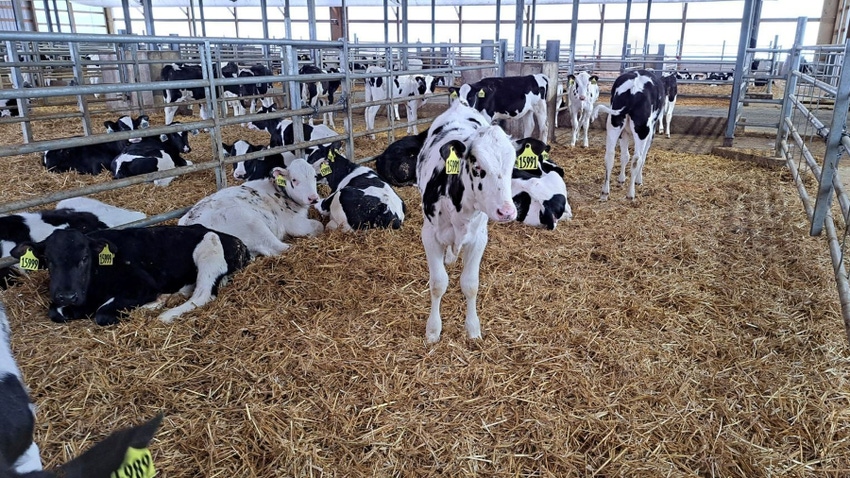
While it may seem a bit early to discuss caring for dairy calves in cold weather, Tina Kohlman, University of Wisconsin Extension regional dairy educator for Fond du Lac, Sheboygan, Washington and Ozaukee counties, says she advises farmers to start planning for cold weather calf care when they reach for a second layer of clothing — it’s a reminder that cold weather is coming.
“When it is cool enough to grab a sweatshirt or a jacket to wear outside, it’s time to plan how you are going to take care of dairy calves in the cold weather,” Kohlman says. “Every animal has a temperature they are comfortable at.
“Newborns to 1-month-old calves are comfortable when the temperature is between 55 and 70 degrees [F]. When the temperature is below that range, calves start to utilize energy to maintain body heat instead of for growth and support of the immune system, leading them to experience cold stress.”
Dairy calves older than 1 month begin to use extra energy to stay warm when the temperature falls below 32 degrees, she says, adding, “Older calves can tolerate the cold better than newborns.”
Calves 1 month and older consume noticeable amounts of starter feed that is digested in the rumen, which produces heat that helps keep them warm, Kohlman explains. Fermentation generates heat in the rumen, which helps keep calves warm as they get older. A newborn calf, on the other hand, receives all of its nutrition from milk that is digested in the abomasum. Also, newborn calves have a larger surface area relative to their weight than larger calves, allowing heat to be lost rapidly.
More calories
Management strategies for winter calf care focus on calories and the environment, including increasing the calories, or energy, a calf consumes so the calf can continue to grow and support its immune system while trying to maintain its core body temperature when temperatures begin to drop.
“This includes increasing the volume of milk consumed per day by feeding an extra quart at each feeding or providing an additional feeding, or the amount of powder [solids] milk replaced in the same amount of water per feeding [not to increase above 12.6% solids],” Kohlman notes.
She recommends providing an environment for calves to combat the cold and conserve energy that includes well-ventilated, draft-free pens or hutches to prevent pneumonia and deep bedding, which gives a cushion from the cold ground, a barrier to any fluids seeping through, and insulation for the calf to nestle.
Calf blankets for calves under 1 month provide an added layer of protection.
“By the time they are 1 month old, calves don’t need a blanket anymore,” Kohlman says. “As we get into the really cold months of December, January and February, calf blankets provide extra support. When it gets bitterly cold, that’s when we start adding more items to help them stay warm.”
Read more about:
CalvesAbout the Author(s)
You May Also Like






